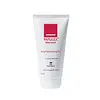What's inside
What's inside
 Key Ingredients
Key Ingredients

 Benefits
Benefits

 Concerns
Concerns

 Ingredients Side-by-side
Ingredients Side-by-side

Water
Skin ConditioningGlycerin
HumectantSodium Cocoyl Isethionate
CleansingSodium Methyl Cocoyl Taurate
CleansingPotassium Cocoyl Glycinate
Coco-Betaine
CleansingPotassium Cocoate
EmulsifyingPolyquaternium-67
Xylitylglucoside
HumectantCitric Acid
BufferingAnhydroxylitol
HumectantSodium Chloride
MaskingBetula Platyphylla Japonica Juice
Skin ConditioningXylitol
Humectant1,2-Hexanediol
Skin ConditioningGlucose
HumectantSodium Acetate
BufferingSodium Hyaluronate
HumectantButylene Glycol
HumectantTrehalose
HumectantAllantoin
Skin ConditioningChamomilla Recutita Flower Extract
MaskingGlycyrrhiza Glabra Root Extract
BleachingCamellia Sinensis Leaf Extract
AntimicrobialPerilla Frutescens Leaf Extract
MaskingOryza Sativa Bran Extract
Skin ConditioningHouttuynia Cordata Extract
Skin ConditioningCentella Asiatica Extract
CleansingCalendula Officinalis Flower Extract
MaskingDisodium EDTA
Potassium Benzoate
PreservativeWater, Glycerin, Sodium Cocoyl Isethionate, Sodium Methyl Cocoyl Taurate, Potassium Cocoyl Glycinate, Coco-Betaine, Potassium Cocoate, Polyquaternium-67, Xylitylglucoside, Citric Acid, Anhydroxylitol, Sodium Chloride, Betula Platyphylla Japonica Juice, Xylitol, 1,2-Hexanediol, Glucose, Sodium Acetate, Sodium Hyaluronate, Butylene Glycol, Trehalose, Allantoin, Chamomilla Recutita Flower Extract, Glycyrrhiza Glabra Root Extract, Camellia Sinensis Leaf Extract, Perilla Frutescens Leaf Extract, Oryza Sativa Bran Extract, Houttuynia Cordata Extract, Centella Asiatica Extract, Calendula Officinalis Flower Extract, Disodium EDTA, Potassium Benzoate
Water
Skin ConditioningDecyl Glucoside
CleansingGlycerin
HumectantCocamidopropyl Hydroxysultaine
CleansingNiacinamide
SmoothingCeteareth-60 Myristyl Glycol
EmulsifyingTea-Lauryl Sulfate
CleansingSorbitol
HumectantLauryl Glucoside
CleansingCitric Acid
BufferingParfum
MaskingDisodium Phosphate
BufferingDMDM Hydantoin
PreservativeIodopropynyl Butylcarbamate
PreservativeDisodium EDTA
CI 42090
Cosmetic ColorantCI 19140
Cosmetic Colorant
 Reviews
Reviews

Ingredients Explained
These ingredients are found in both products.
Ingredients higher up in an ingredient list are typically present in a larger amount.
Citric Acid is an alpha hydroxy acid (AHA) naturally found in citrus fruits like oranges, lemons, and limes.
Like other AHAs, citric acid can exfoliate skin by breaking down the bonds that hold dead skin cells together. This helps reveal smoother and brighter skin underneath.
However, this exfoliating effect only happens at high concentrations (20%) which can be hard to find in cosmetic products.
Due to this, citric acid is usually included in small amounts as a pH adjuster. This helps keep products slightly more acidic and compatible with skin's natural pH.
In skincare formulas, citric acid can:
While it can provide some skin benefits, research shows lactic acid and glycolic acid are generally more effective and less irritating exfoliants.
Most citric acid used in skincare today is made by fermenting sugars (usually from molasses). This synthetic version is identical to the natural citrus form but easier to stabilize and use in formulations.
Read more about some other popular AHA's here:
Learn more about Citric AcidDisodium EDTA plays a role in making products more stable by aiding other preservatives.
It is a chelating agent, meaning it neutralizes metal ions that may be found in a product.
Disodium EDTA is a salt of edetic acid and is found to be safe in cosmetic ingredients.
Learn more about Disodium EDTAGlycerin is already naturally found in your skin. It helps moisturize and protect your skin.
A study from 2016 found glycerin to be more effective as a humectant than AHAs and hyaluronic acid.
As a humectant, it helps the skin stay hydrated by pulling moisture to your skin. The low molecular weight of glycerin allows it to pull moisture into the deeper layers of your skin.
Hydrated skin improves your skin barrier; Your skin barrier helps protect against irritants and bacteria.
Glycerin has also been found to have antimicrobial and antiviral properties. Due to these properties, glycerin is often used in wound and burn treatments.
In cosmetics, glycerin is usually derived from plants such as soybean or palm. However, it can also be sourced from animals, such as tallow or animal fat.
This ingredient is organic, colorless, odorless, and non-toxic.
Glycerin is the name for this ingredient in American English. British English uses Glycerol/Glycerine.
Learn more about GlycerinWater. It's the most common cosmetic ingredient of all. You'll usually see it at the top of ingredient lists, meaning that it makes up the largest part of the product.
So why is it so popular? Water most often acts as a solvent - this means that it helps dissolve other ingredients into the formulation.
You'll also recognize water as that liquid we all need to stay alive. If you see this, drink a glass of water. Stay hydrated!
Learn more about Water